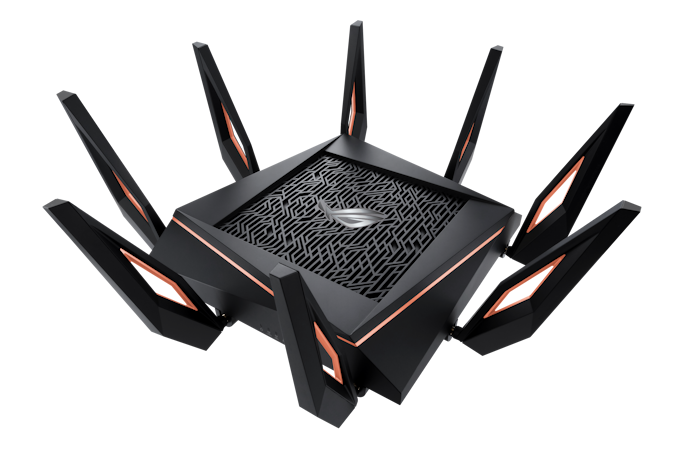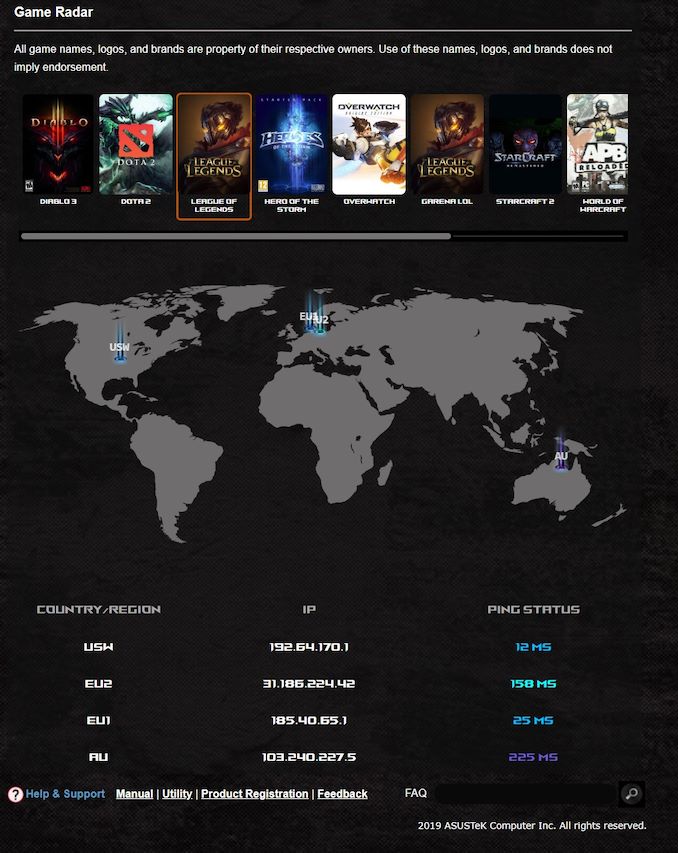AT 101: Wi-Fi 6 And Why You Want It
by Brett Howse on February 12, 2020 8:00 AM ESTThe 2020 AnandTech Wi-Fi Test Bed
We’ve been comfortably using Wi-Fi 5 for some time now, and it is only in the last several months that laptops have been shipping with Wi-Fi 6 based networking, mostly thanks to Intel’s Project Athena which has a requirement of the Intel AX200 Wi-Fi module, which is Intel's first Wi-Fi 6 based module on the market. Previously almost all shipping laptop computers offered Wi-Fi 5, and even a few with the latest Intel wireless adapters such as the Wireless-AC 9260 offered the advanced Wi-Fi 5 options such as 160 Mhz channel width, and MU-MIMO, so its nice to see a move to a new standard which includes these benefits across the board.
Although there are now quite a few Wi-Fi 6 routers and access points on the market, we had some specific criteria to meet. The router had to support Wi-Fi 6, and the 160 MHz channels, but because we are testing for performance, and not for capacity, we need an access point with a multi-Gigabit Ethernet connection. A typical laptop with a 2x2:2 network connection will be connecting to the access point at 2.4 Gbps, so transferring files from Ethernet over Gigabit will be a bottleneck. This does limit the selection somewhat.
After evaluating several models, we decided on the ASUS ROG Rapture GT-AX11000. The name is a mouthful, but meets all of our criteria and more. Most importantly, it offers the coveted 2.5 GbE port.
The ASUS ROG Rapture GT-AX11000
As the name implies, this router from ASUS can support up to 11000 Mbps over wireless, thanks to the 4x4 2.4 GHz, offering 1148 Mbps, and the two 4x4 5 GHz networks each offering 4804 Mbps. This adds up to just under 11000 Mbps, although with wireless the maximum connection speed is pretty much impossible to achieve. With the two separate 5 GHz networks, you can easily split off your consumption devices with higher priority devices, reducing interference on each network.
On the Wide Area Network (WAN) side there is a single 1 Gbps connection, and on the Local Area Network (LAN) side there are four 1 GbE and the single 2.5 GbE connection.
This router is built for capacity, with eight external antennae, and being a gaming router it also offers plenty of RGB lighting options. For those that don’t need the lighting, it can be turned off. ASUS also some tools to change the priority of gaming packets to reduce latency, assuming your network is that busy, and specifically prioritizes traffic from other ROG devices to make setup as easy as possible. ASUS even includes a utility to ping the various game servers for popular multiplayer games to provide you a map of latency to each one.
The GT-AX11000 also integrates with the ASUS AiMesh networking equipment to provide a whole-home mesh network, if even a router of this size can’t cover the entire house, either due to size or building materials blocking the signal.
For testing, the router is used in the access point mode, with the LAN connecting being over the 1 Gbps Ethernet, and a server connected directly to the router in the 2.5 Gbps port.













149 Comments
View All Comments
Mccaula718 - Wednesday, February 12, 2020 - link
Why is the WAN port only 1 Gbps?5080 - Wednesday, February 12, 2020 - link
You can always combine a WAN and LAN port into dual WAN to double the throughput. I have an ASUS RT-AX88U connected to an ARRIS SB8200 with Link Aggregation to take advantage of a 1.2Gbps internet connection.Makaveli - Wednesday, February 12, 2020 - link
Sounds like you are on a 1Gbps cable connection why bother with Link Aggregation?do you actually see the slight over provision on the connection?
deil - Wednesday, February 12, 2020 - link
at my place you can get either from 250/50 Mb/s to 1000/50 Mb/s from anyone that is quite cheap or 3000/500 from one for insane price (~20x more).I am planning for now to use that for both reliability of the uplink (I know ISP's use different nodes when they leave my place) and faster bandwidth (I have fiber to my place and cat 6 (5GB/s) internally.
5080 - Wednesday, February 12, 2020 - link
It peaks at about 1.1Gbps on LAG and 0.85Gbps on one.Dug - Wednesday, February 12, 2020 - link
1Gbs outside may actually be 1Gbs. Inside 1Gbs isn't 1Gbs because of overhead when you have multiple connections. So with aggregation you can benefit multiple connections going outside.azfacea - Thursday, February 13, 2020 - link
this is getting really ridiculous. wired lan is going from "slower" than wifi to "much slower" than wifi. If aliens came down to earth i am not sure what they would think of this lunacy.zshift - Thursday, February 13, 2020 - link
This isn't the case. 2.5Gbps and 10Gbps Ethernet has been out for a while now, it's just not propogating to consumer hardware because it isn't needed in most scenarios. Ethernet can maintain these high data rates over very long distances. This article showed that even wifi 6 across a few rooms drops to below 500Mbps. Higher wifi speeds are needed in order to compete with Ethernet over a long distance, but it's still far more stable (though not easier) to drop Ethernet throughout your place to get near 1Gbps with older routers.RadiclDreamer - Friday, February 14, 2020 - link
10gb, 25gb, 40gb and 100gb are commonplace in the business space, they just havent filtered down to consumers due to lack of demand.Keep in mind also that wifi is simplex (or half duplex) meaning that it can only send or receive but not both at the same time. You also have a lot of overhead on wifi that leads to these numbers not being as good in practice as you might think. Take a normal AC router for example, and lets say you are connected at 867mbps, thats for the entire link, not just the payload. You have WPA2 overhead, errors, retransmitted frames, interference with your neighbors/other devices, TCP/IP overhead (which is present on ethernet also) to contend with and you are going at 1/2 duplex. All of this together means that you are going to actually see about a 400mbps connection for payload.
This is not to snub wifi, its getting very good very fast. But to say that it even comes close to competing with a hardwired connection is just not understanding the technology and whats out there.
Makaveli - Friday, February 14, 2020 - link
Wifi being half duplex only applies to everything Pre Wifi 6 (AX).AX is full duplex.